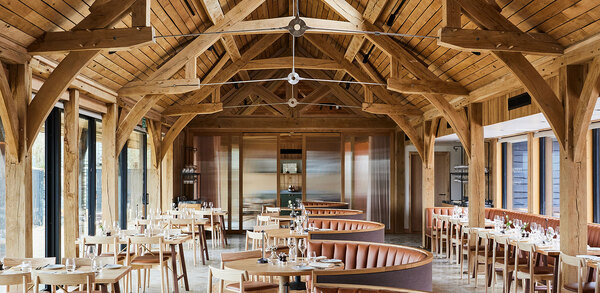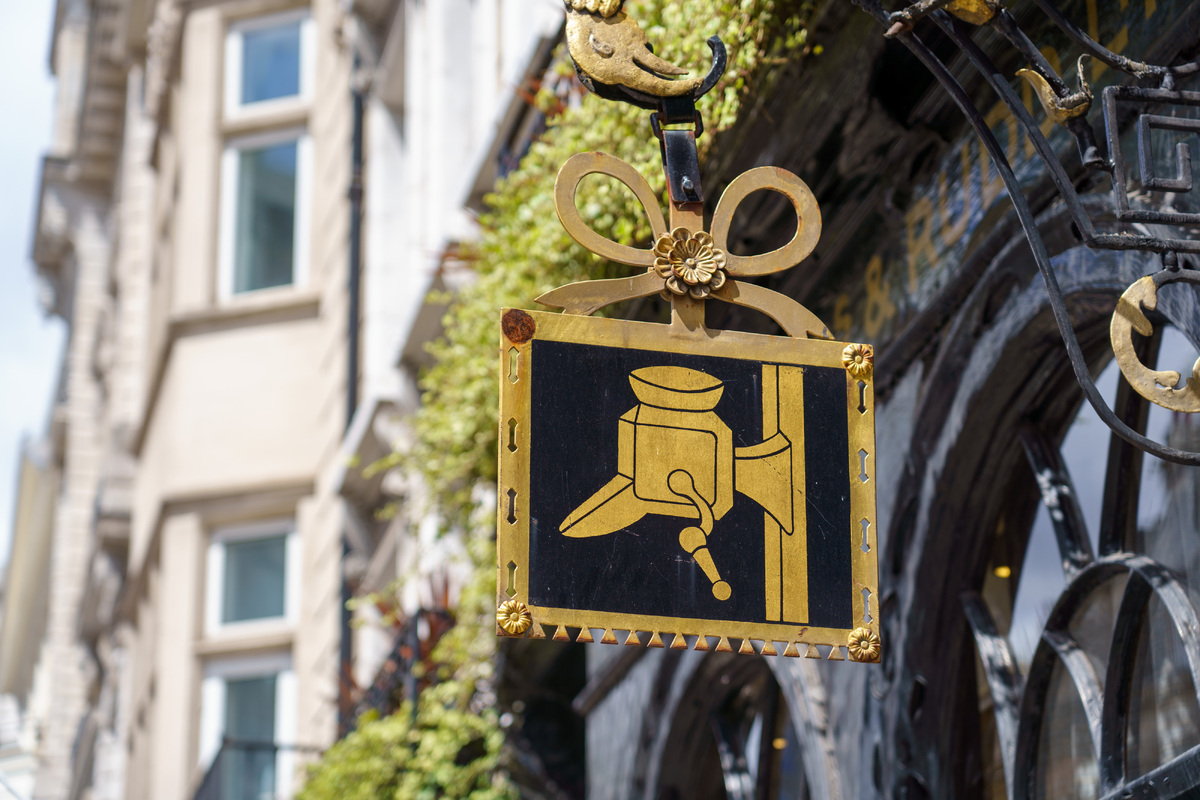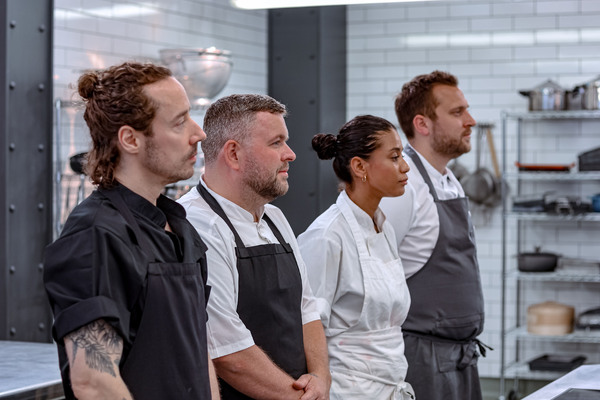Swede Sensations: Mathias Dahlgren and Magnus Ek lead Swedish new wave
For one very cold country, Sweden sure seems to be generating a lot of heat right now. It was part of the Scandinavia area playing "guest of honour" at Madrid Fusión last year. This year Michelin awarded three new stars to Sweden in its Main Cities of Europe guide. The recent English-language publication of Sweden's home-grown guide to gastronomy, the White Guide, suggests interest in the land of herring, dill and Daim bars is spreading well beyond the Baltic.
Meanwhile, there's the New Nordic Kitchen manifesto championed by Danish chef René Redzepi and signed by Sweden's Mathias Dahlgren. This involves a successful marriage of progressive, cutting-edge technique with seasonal, regional produce. Well-travelled Swedish chefs are returning home with experience picked up at some of the world's finest restaurants, and they're eager to apply it to the traditional produce and techniques of their homeland.
Dahlgren, the 40-year-old chef with a second Michelin star at his year-old restaurant Matsalen at Stockholm's Grand hotel as of two weeks ago, is acutely aware of the part he plays in the revival of Swedish cuisine. The location itself is thick with culinary history as the place where Régis Cadier, the founding father of the Swedish fine-dining tradition, started out.
When 1997 Bocuse d'Or winner Dahlgren re-emerged on the Stockholm scene after a year off, the pressure was on to live up to expectations. "This is the Grand hotel: a landmark in Scandinavia," he reminds us.
The space vacated for Matsalen had long lain underused, having been variously a stove showroom, an Indian café, and locker rooms - never a destination restaurant. But it was stripped back by designer Ilse Crawford, best known for her work with London's Soho House Group, to create a stunning space, "a package of what Sweden is today" - namely, a brace of restaurants, one casual (Matbaren, meaning "food bar" - now with one Michelin star), one formal (Matsalen, "dining room").
What's remarkable about this is that until a few years ago Dahlgren had been known for his Spanish-inspired cooking or "stilo nuevo Euro-Latino" at his former restaurant Bon Lloc, which closed in 2006. So what inspired this volte-face into more local fare? "I didn't change overnight. I'd actually been building up a network of small-scale, high-quality producers here in the region," says Dahlgren. "The difference is, today my food is based on the ingredients. Then it was on an international fine-dining base. ‘International' can sound really boring. I wanted to do something more out of my own food culture."
Dahlgren is quick to point out that he's not the only chef working in this new manner. "We have a long food culture, but a short restaurant culture, so we always had to speak in a common language to be understood. It's new for us to feel just a little bit proud of who we are and what we have."
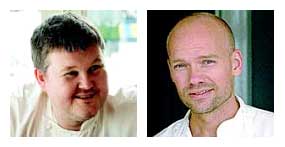
Even the knives he's chosen are a tactile evocation of his rural upbringing. "For you, it's just a knife," he says, handing over a heavy wooden-handled knife. "For me, it's a Mora knife. I got my first when I was five years old. It was the greatest moment in my life. That's a Swedish experience, something you couldn't get from a Laguiole."
Dahlgren calls it "natural cuisine". He is working to track down the best biodynamic and organic produce, including berries, sprouts and herbs, as well as the best of more common produce, for example, varieties of carrots or potatoes that have been overlooked by farmers putting ease of production and storage over taste.
"Natural" doesn't mean the chef's technical intervention is limited, however. "High technology in any form that brings out the best of the ingredients, I say ‘yes' to." Thus at Matsalen, a scoop of organic plum sorbet from the Pacojet served on a "puck" of ice with flowers set in it, recalls the perfect plum. "Nothing can make this plum better," says Dahlgren. Sausage and pickles with a cold beer next door at Matbaren is an even more direct "food feeling".
Dahlgren won't do kitsch remakes; he likes "food with a story", such as using Arctic angelica, sent down in packages from an old lady in Lapland. His sorbet of it harkens back to when the Sami people would boil it up with reindeer milk, freeze it, then drink it in the winter months to ward off scurvy. "You transform an idea into the spot where you are living - right here, right now. That is the meaning of travel."
For those inclined to travel even further for a distinctly Swedish food fix, a one-hour drive - or a two-and-a-half-hour journey by bus, train, foot and car ferry - south from the Swedish capital takes you to the island of Oaxen. Chef Magnus Ek and his sommelier wife Agneta Green have run the island's sole restaurant, Oaxen Skärgårdskrog, since 1994. Their 44-seat "restaurant of the archipelago" is too far off the beaten path for Michelin, but holds an impressive 32/35 in the White Guide (see panel above).
It's a glorious spot, peaceful and pastoral, typically Swedish, with wild strawberries underfoot, pastel-painted houses and cool, clear waters lapping on the shore. Ek, Green and their dog Neo forage daily on the island during their May-to-October season.
But don't be fooled. Oaxen Skärgårdskrog is no folksy, rustic inn. Ek, a member of the Swedish culinary team for seven years, is a technically minded, cerebral chef. Each year, he reopens for summer with an entirely new menu. The theme for 2008's menu is distillation, a technique that manifests itself on the plate in a succession of forms - transparent gels, liquors and films.
A rotating evaporator is Ek's favourite toy. "I'm obsessed with it," he laughs. "I even always clean it myself because I don't want anyone to touch it. What's nice is that you get two products: the thing you're distilling and the concentrate. Some ingredients work really well, others… not so well. Some are quite sensitive to hard heat, like rockweed and buckthorn berries. The best way of extracting the flavours is with low temperatures."
Ek distils sea buckthorn, pairing the distillate with strawberries alongside a sea buckthorn chocolate sorbet with ice-smoked lemon verbena. Along with smoked warm Norwegian lobster on the tasting menu there's a crystal-clear parcel of clam distillate revealing within it clams, cucumber and dill. On the side is a shot of the liquor as clear as Orrefors glass. Locally foraged rockweed makes several appearances: small dots called "blisters" and a jelly of it come with Isomalt egg with truffle cream crisp filaments of the dried remains appear with goats' milk cheesecake.
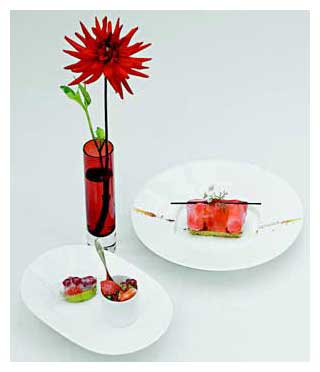
Ek's take on an old archipelago method involving smoking, salting, drying and "forest-baking" fish in birch and pine, works superbly with glassy turbot. A pig's head, crisp-skinned, slow-cooked overnight after four days in salt, herbs and garlic, with the fat, tasty cheeks removed tableside by a smiling waitress. A truly memorable dish. Says Ek, with a smile: "I want you to have an experience that will last with you when you leave." A declaration that's as close to a mission statement of Swedish cuisine as you could wish for. Great technique without a connection to time and place is not enough any more.
Mathias Dahlgren, Grand Hôtel, S Blasieholmshamnen 8, PO Box 16424, SE 10327 Stockholm, Sweden. Tel: 00 46 8 679 35 84. www.mdghs.com
Oaxen Skärgårdskrog, Oaxen, SE 153 93 Mörkö, Sweden. Tel: 00 46 8 551 531 05. www.oaxenkrog.se
DAHLGREN'S DISHES
MATSALEN
- Pickled herring and caviar, potatoes, egg yolk, chives, brown butter
- Pan-fried breast of canette, purée of horseradish, pink grapefruit, parsley
- Baked almond, bay leaf ice-cream, black treacle, olive oil
MATBAREN
- Shrimps from Smögen in horseradish mayonnaise, whitefish roe, fried bread, dill
- Breast of guinea fowl from France, mushrooms, nuts, grapes, foie gras
- Leaves, sprouts, herbs from Mikael in Ugglarp, olive oil, vinegar, salt, black pepper
OAXAN DISHES
- Sandalwood smoked sea water-salted turbot with king crab and chanterelles in jelly of jasmine tea, "island walk" salad and shellfish glace
- Confit pig's head and black pudding bread served with glazed Jerusalem artichoke and marmalade of apples
- Goats' milk cheesecake in burnt bay leaves, chèvre from Ljusterö and foam of Karl Johan goats' cheese served with garden cress purée, macadamia nut and crispy rockweed
THE WHITE GUIDE
This year, for the first time, Sweden's five-year-old restaurant handbook, the White Guide, is out in English. This is great news for tourists and for those chefs toiling away in the Swedish hinterland, an area overlooked by Michelin's Scandinavian coverage in the Main Cities of Europe guide.
This latest White Guide comes in response to "a widespread and growing interest from abroad in Swedish gastronomy" and an increase in "food tourism", according to the guide's publisher, Lars Peder Hedberg. Its remit is broad: to cover "the best, the trendiest, the coolest, the most romantic and the most culturally exotic restaurants".
The guide includes 250 restaurants, a selection from the Swedish version's 500. Two ratings are given: the overall rating (out of 100) and the food rating (a maximum of 35 from the 100 points). This leads to contentious results such as the "Best Overall Experience", Lux, in Stockholm, trailing one food point behind the city's "Best Food Experience", Esperanto.
Distinct from the mysterious likes of Michelin, it sets out to be fully accountable. For example, basics such as cleanliness of the loos could net 10 points service, including booking and "departure rituals", scores out of 15 food gets a maximum of 35, again clearly expounded as complexity, innovation, condition of produce, etc. More good news for chefs is that there's no more second-guessing the inspectors. It's all there in black and white.
White Guide's first overseas foray, White Guide Berlin, is published next year.
White Guide 08-09 is available for SKr73 (£6.25) from www.bokus.com.
SWEDISH LEGENDS
Régis Cadier The French chef de cuisine and founder of the Grand hotel in 1874 is credited with introducing the French kitchen to Stockholm.
Tore Wretman The original Swedish celebrity chef and restaurateur, a huge star from the 1960s thanks to his legendary restaurants, including Riche and Operakälleren. His book, Svensk Husmanskost, is a classic.
Erik Lallerstedt One of the first Swedish chefs to win a Michelin star, Lallerstedt wowed Stockholm with his French-style nouvelle cuisine at Eriks in the 1970s and 1980s. His restaurants Eriks Bakficka and Eriks Gondolen remain hugely popular.
Hasselbacken The Stockholm restaurant where the famous baked Hasselback potato was invented. Dating back to 1925, it's now owned by Scandic Hotels.
Operakälleren This "national monument" opened as a wine cellar in 1787 and became a grand restaurant in the 1860s. Tore Wretman took over in the 1950s with Swiss chef Werner Vögeli (ex-Grand hotel) at the stove.
Hotel Rydberg Sweden's first hotel of international standing opened in 1858. Taken over by Régis Cadier a year later, its best-known contribution to cuisine is the popular beef and diced potato dish, biff Rydberg. It closed in 1914.




